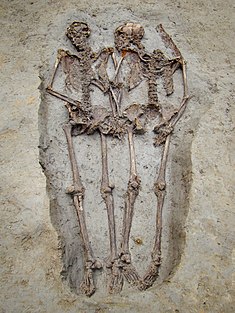 |
Photograph was taken by Robert K. Wilson 1934
|
Accounts of a beast living in the waters of Loch Ness, Scotland goes back about 1,500 years, but the Loch Ness Monster we know today started in 1933.
Kelpies or water horses are creatures of Scotland folklore. They are shape-shifting water spirits that reside in both large and small bodies of water. They will sometimes also assume human form, but with hooves. They are known to prey on humans.
The earliest reported sighting of a beast or Kelpie in Loch Ness was in a biography of Saint Columba, who is credited with bringing Christianity to Scotland. According to Saint Columba On August 22, 565 he had stopped along the shores of Loch Ness on a journey to see the Pictish king. He claimed that there was a man who was swimming in the lake being attacked by a beast. Columba claims he raised a hand invoking God and commanded "Go back with all speed." and thus he saved the man as the beast left.
After April of 1933 sighting, it was the start of what we know as the Loch Ness Monster or Nessie. The sighting was published in a newspaper people began to grow more interested in it. When a couple also claimed to see it, but it was on land crossing shore road it really piqued the interest of the people. By October many British news reporters were sent to Loch Ness. On the radio programs would be interrupted by updates of what was happening at Loch Ness. There was even a £20,000 or $25948 reward for the capture of the beast.
Tons of tourists were even coming to Loch Ness to catch a glimpse of the monster that resided in it. Many of the people that came were boy scouts and outdoorsmen who would sit in boats or in deck chairs so that they could see the beast.
In December of that year,
London Daily Mail hired actor, director, and big-game hunter Marmaduke Wetherell to track down the beast. After a few days of being there, Wetherell reported finding fresh footprints of a four-toed animal. This prompted
London Daily Mail to carry out the dramatic headline of "The Monster of Loch Ness is Not Legend but Fact."
There was plaster of the so-called footprint of the beast, and it was sent to the Natural History Museum in London. In Jan. of 1934, it was found that the footprints were faked. The plaster footprint was of a hippopotamus foot that was more than likely stuffed. It was the first faked evidence of many for the years to come. This even had also tainted the phenomenon of the Loch Ness Monster and caused people to doubt it was real. It isn't known if Wetherell was the one who tried to pull off this hoax or was just a victim of it.
Even though the hoax of the footprint came out and the popularity of the Loch Ness Monster deflated people still came forward claiming that they had seen it. Many of the witnesses described a large creature with one or more humps much like an overturned boat. Many of the witnesses seemed to be of level-headed people.
On April 19, 1934, Robert K. Wilson a surgeon from London was on a hunting trip near Loch Ness. While he was driving by Loch Ness he saw movement in the water and pulled over to see what it was. By chance, he had a camera with him as he saw a large neck of an animal. So he had taken the picture and then sold it to
Daily Mail and it is now one of the most known images of the Loch Ness Monster. It is also believed that this image was also faked.
The most popular theory is that the Loch Ness Monster is a Plesiosaur, a prehistoric aquatic reptile that lived in the warm waters around Scotland 70 million years ago. 65 million years ago they had become extinct as there has been no fossil evidence of them being alive after that time. The Plesiosaur shares many physical aspects with Nessie. People theorize that 12,000 years ago when Loch Ness was solid ice that a Plesiosaur got frozen in it also and survived when being thawed out.
The downside of this theory is that Plesiosaur would not have survived being in ice and being thawed out. It wasn't possible. Another thing is that it lived in warm waters and Loch Ness would be considerably way too cold for the extinct reptile. Also after it was thawed out why would the Loch Ness Monster go to Loch Ness when it had few fish and nutrients after the ice age. Also, the reptile breathed air, so it would have to frequently come up for air constantly and would be seen more often. In that aspect, there would also be more evidence of Nessie if that was true.
This was the beginning of how we see the Loch Ness monster or Nessie as people term it now. Like back then people in the present day's people still go hunting Nessie. Even now people claim to have seen the monster. Scientists also haven't found evidence that neither confirms or denies the Loch Ness Monster.
SOURCES:




.png)
